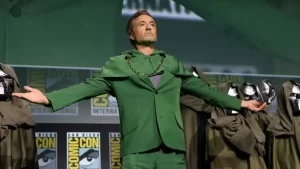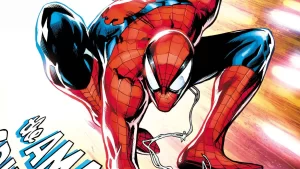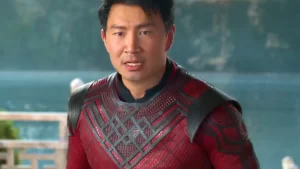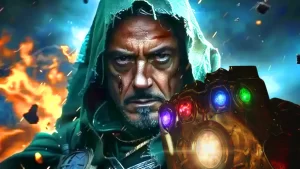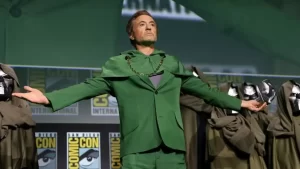Writers: Dan Abnett and Andy Lanning
Artist: Wesley Craig
Colorist: Nathan Fairbairn
Cover Artist: Alex Garner
Warning: Contains Spoilers
One of the many strengths of Guardians of the Galaxy is that it is never predictable. The cynical point of view as expressed by a reviewer at another website is that Marvel allows DnA to take chances with GotG characters because nobody is going to buy action figures or other merchandise in their likenesses. In other words, the cynical point of view is that Marvel doesn’t really care about this book or these characters. I disagree. I think Marvel knows they have a hot property here and they are encouraging DnA to push the boundaries. Issue #19 certainly takes big chances with the characters and with the future of the series. It remains to be seen if the big chances will result in a big payoff or a big bust. That’s just the nature of gambling.
I must say that when I first read #19 I had a lot of mixed feelings about the direction of the story line. I read it a second time; then a third time just before I sat down to write this review. The third reading was the charm in the sense that by then I could move beyond the purely visceral emotional reaction of anger at seeing so many of my favorite characters from one of my favorite books so brutally and needlessly slaughtered – and focus on the actual story being told. The story DnA have woven involves the (seeming) resolution of several plot threads stretching as far back as Conquest; and incorporates the classic heroic themes of courage and self-sacrifice in the face of apparently insurmountable odds. Through the use of the time paradox plot device, they also ask the questions: If you could go back in time to a specific pivotal moment in your life and change things – would you? Would it even make a real difference and would the unintended consequences be acceptable? Would it be worth it – especially if it involved sacrificing the lives of your friends? Would you sacrifice your friends and yourself to save the universe? DnA then explore the often crushing responsibilities of leadership via Starlord’s terrible and fateful dilemma at the end of the story. Would you have wanted to be the trigger man in that situation? That wasn’t really Magus he shot. That was Warlock. It’s kind of like the old question: “If you could go back in time and shoot Hitler when he was a child, would you do it?”
So, the good news is that the chances taken with the characters “worked” on a purely dramatic level. That’s the upside of the gamble. Now, what about the downside?
Well, on the downside, a whole bunch of fan favorite characters are (apparently) dead – and this in a book with sales numbers such that it can’t afford to be losing readers (many of whom are angry about the deaths and threatening to drop the book). Now, if you read the blogs you’re already seeing predictions about how long these characters will stay dead because after all, we’ve all seen Warlock and Gamora (doesn’t she have a healing factor anyway?) killed before – only to be resurrected – though I would point out that it was often years later before they were brought back to life.
Others have pointed out that it’s unlikely that, as death’s avatar, Phyla will stay dead. Likewise we’ve seen Mantis brought back to life as recently as the Conquest mini-series. We’ve also seen Captain Victory’s demise from containment suit breach before – only to have him come back to life.
I think the most jarring death for me and for most of the fans was that of Cosmo. I know I certainly had a dismayed WTF moment when that happened akin to what I might have experienced, if while watching classic TV, I witnessed Timmy suddenly whip out a gun and shoot Lassie in the head. From reading the blogs, I don’t think I was alone in that reaction. I mean – people really like dogs – especially Labradors – and especially anthropomorphized dogs (as just about every dog owner anthropomorphizes their beloved pet). Also, lots of people (mistakenly IMO) believe the true strength of Guardians of the Galaxy rests on the anthropomorphic characters of Rocket, Groot, and Cosmo – and those folks are really pissed right about now at having lost one of the triumvirate of anthropomorphics. I’ve seen some bloggers and dog lovers threatening to drop the book because of Cosmo’s death.
Giving everything above due consideration, I have to wonder if making a dramatic point by killing half the cast was really worth it if a substantial number of paying customers were alienated or offended to the point that they drop the book. Couldn’t everyone have just been knocked out or wounded? For that matter, why didn’t Starlord just use the cosmic cube to resurrect everyone and erase the Magus from Warlock’s reality? If the issue is paring down a cast of characters that has become too large and unwieldy, couldn’t some members have just been rotated off for awhile like they do in the ever changing roster of any of the Avengers titles? If someone absolutely had to die to give the story gravitas; couldn’t DnA have just killed Warlock? After all, there’s (apparently) another Warlock waiting in a cocoon; so the Warlock fans wouldn’t have been too upset.
Speaking of gravitas, let’s talk about Craig’s much debated art. From the blogosphere, it appears to me that about half of the fans like Craig’s art and about half of the fans don’t like Craig’s art for Guardians of the Galaxy. In contrast, the Guardians of the Galaxy oriented renderings of Walker, Pelltier, and Alves are consistently liked by the majority of the fans. The issue is not about Craig’s talent as an artist. He clearly is a talented artist. The issue is whether or not his cartoonish style serves the story well or detracts from the story. The general consensus for at least half the fans seems to be that Craig’s art detracts from the gravity of the subject matter. I ask the question: Can this book afford to be displeasing half the fans with art that they don’t like? I think the answer is no. Personally, I prefer the more photo-realistic take of some of the other artists listed above for books that are addressing more mature subject matter. If I’m paying $2.99 or more for a comic book that I’m done reading in five minutes; I expect to open the book and see beautiful people depicted. If I want to see ugly cartoonish people, I don’t have to pay. I can drive 5 blocks down the street to the Super-Wal-Mart, walk through the store, and see as many ugly cartoonish people as I like free of cost.
Turning to some art I did like, Garner’s cover art for #19 was very well done. I think it is among the best of the series thus far.
Back to the writing for a moment, did anyone else feel like the story got too rushed toward the end? I would have liked to have seen the destruction of the Universal Church of Truth rather than just read about it. Also, where are the bodies of the lost comrades and where are their weapons (Gamora’s Sword, Phyla’s Sword, Major Victory’s shield)? Left behind? For that matter, where is the cosmic cube? Too much was crammed into those last panels and I didn’t like the seeming finality of the end of the storyline. It felt like I was reading the last issue of a series rather than the most recent issue of an ongoing. I fear that this approach has given some of the wavering fans a convenient jumping off point.
In the final analysis, Guardians of the Galaxy #19 had its good points and its questionable points. #19’s storyline is a huge gamble on the part of DnA; and the stakes are the book’s survivability in an increasingly competitive market. Of course it remains to be seen if the gamble paid off in terms of improving sales and garnering new readership; or if it drove established readers away. I’m hoping the gamble paid off because I want to see Guardians of the Galaxy have a long, bright future. I’m staying onboard for the duration of this book and I urge all the other fans to be patient and let DnA work more of their magic.
Innovative, exhilarating, unpredictable, and just downright fun; Guardians of the Galaxy gives us a rollercoaster ride through the cosmos each month. I can’t wait to see what happens in issue #20.
Article by: Bill Meneese

![[page_title]](https://cosmicbook.news/wp-content/uploads/2022/08/cosmic-book-news-default-featured-image.webp)
